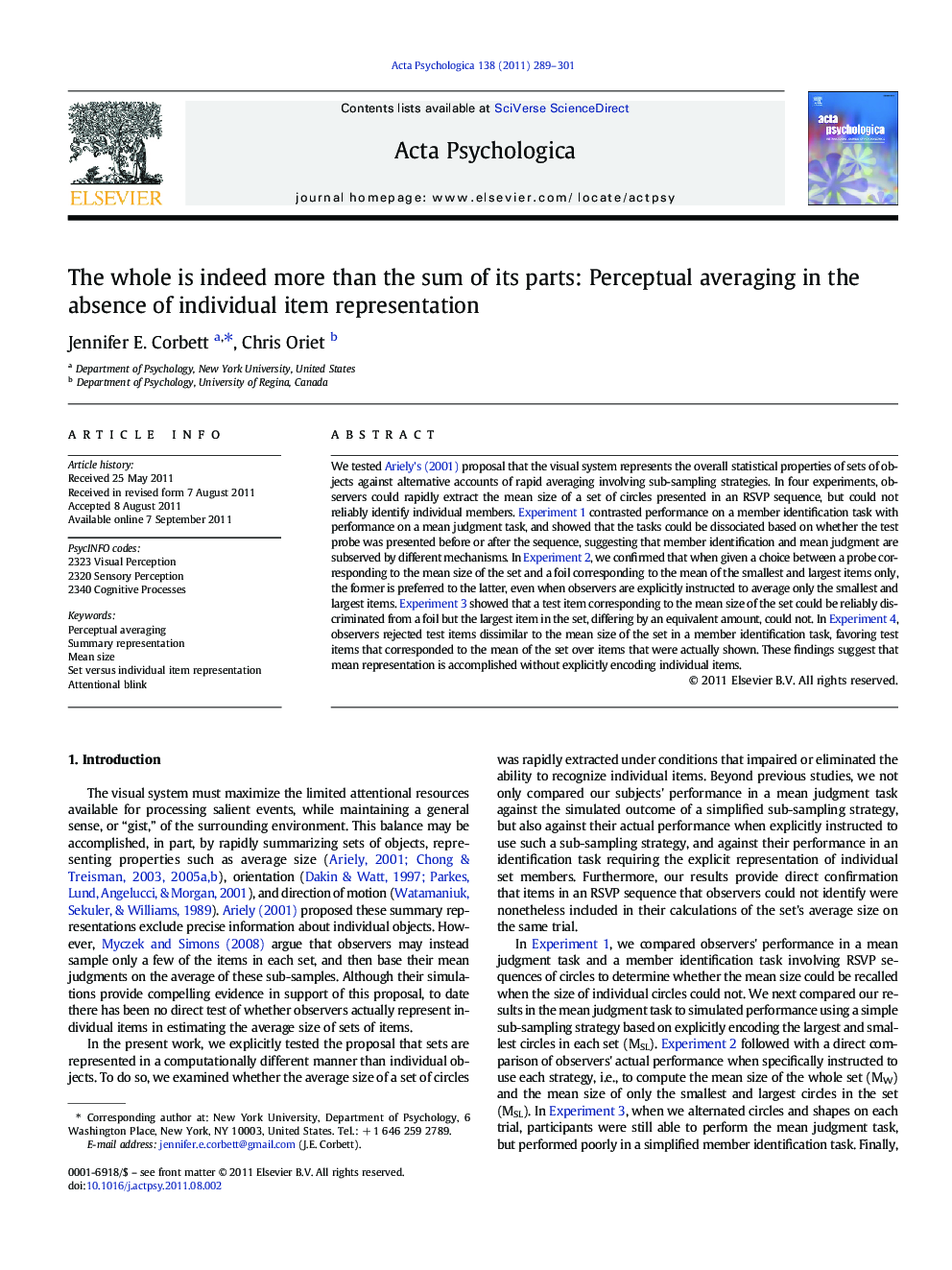| Article ID | Journal | Published Year | Pages | File Type |
|---|---|---|---|---|
| 919983 | Acta Psychologica | 2011 | 13 Pages |
We tested Ariely's (2001) proposal that the visual system represents the overall statistical properties of sets of objects against alternative accounts of rapid averaging involving sub-sampling strategies. In four experiments, observers could rapidly extract the mean size of a set of circles presented in an RSVP sequence, but could not reliably identify individual members. Experiment 1 contrasted performance on a member identification task with performance on a mean judgment task, and showed that the tasks could be dissociated based on whether the test probe was presented before or after the sequence, suggesting that member identification and mean judgment are subserved by different mechanisms. In Experiment 2, we confirmed that when given a choice between a probe corresponding to the mean size of the set and a foil corresponding to the mean of the smallest and largest items only, the former is preferred to the latter, even when observers are explicitly instructed to average only the smallest and largest items. Experiment 3 showed that a test item corresponding to the mean size of the set could be reliably discriminated from a foil but the largest item in the set, differing by an equivalent amount, could not. In Experiment 4, observers rejected test items dissimilar to the mean size of the set in a member identification task, favoring test items that corresponded to the mean of the set over items that were actually shown. These findings suggest that mean representation is accomplished without explicitly encoding individual items.
► Direct test of sub-sampling versus whole set averaging strategies for perceptual averaging. ► Items that cannot be reported nevertheless influence calculation of average size. ► Set representation does not involve encoding individual items.
